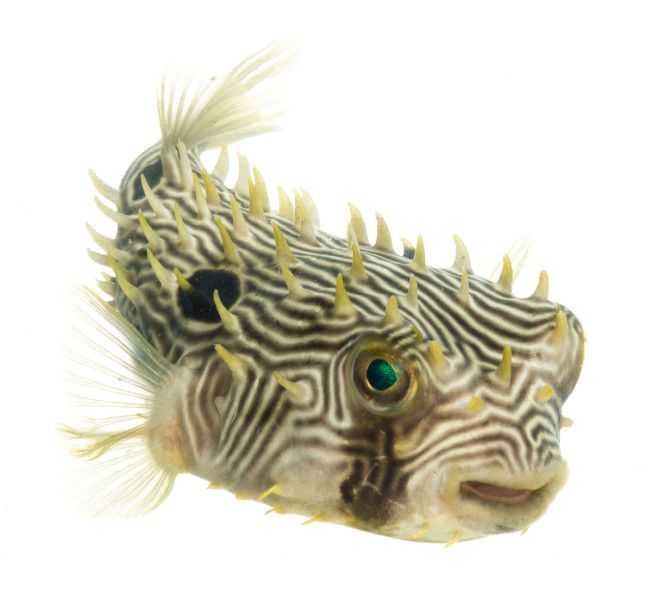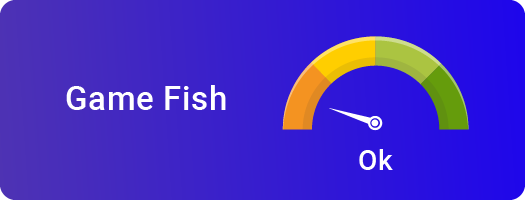Striped Burrfish

Species Details
Chilomycterus Schoepfii
Diodontidae
Tetraodontiformes
Rivers, Inshore
1 - 2 lbs.
8" - 11"
Striped Burrfish (Chilomycterus schoepfi) Fish Description
The Striped Burrfish is a small pufferfish that resembles the porcupinefish. They are distinguished by the following: the Striped Burrfish has immovable spines that are shorter and less pointed covering its spherical body.
Its color is generally brown to olive on the upper body part, and pale yellow on the lower part. The back and sides of the Striped Burrfish have wavy striped colored black or brownish. It also has many huge black spots on the sides, one is found behind the pectoral fin and another below the dorsal fin. It has short but sharp spines all over its body. The Striped Burrfish has a large head with beautiful, bulging yellow eyes containing blue-green specks.
Diet and Size
The Striped Burrfish feed on invertebrates like hermit crabs, oysters, mussels, barnacles, and mall crabs. They like snails and other fish creatures with hard shells. They squash and eat their prey using their powerful beaks. Sometimes, the Striped Burrfish consume their food whole including the shells. They are primarily carnivorous but they may also eat algae.
The Striped Burrfish can grow up to around 10 inches long.
Interesting Facts About the Striped Burrfish
- Sometimes, when Striped Burrfish are captured in gill nets and end up dead, the fishermen would toss them back to the sea. Those who walk along the beach must be careful not to step on dead Striped Burrfish.
- The mouth of a Striped Burrfish is strong and looks like a parrot’s beak.
- The Striped Burrfish can puff their bodies, becoming spiny balls of danger, to ward off their predators.
- The Striped Burrfish are not very good swimmers; they only squirt water out of their gills in order to push themselves forward.
- As a defense mechanism, the Striped Burrfish inflates itself by inhaling water using its organ called the ‘buccal pump’.
- The Striped Burrfish gnaw on corals to serve as a whetstone for their beaks.
- It hunts alone at night and uses camouflage to wait for prey.
- Generally, other carnivorous sea creatures avoid the Striped Burrfish because of its defense mechanisms. However, once this fish inflates itself, it cannot move; to do so, it must deflate itself first.
Striped Burrfish — Fishing Techniques
Anglers love to fish for Striped Burrfish not for commercial or culinary purposes but to stuff them and sell them as an aquarium pet. The IUCN labeled it as a species of least concern.
Anglers must be careful when handling the Striped Burrfish because of their sharp beaks and spines. The Striped Burrfish can be caught by using hook and like but anglers must wear gloves as a precaution.
Habitat and Distribution
The Striped Burrfish are mostly located in the tropics, particularly in the western part of the Atlantic Ocean from Brazil to Florida, and the Atlantic Coast going as far as Cape Cod. They also swim the waters of the Caribbean Sea, and of Nova Scotia down to Belize. They are also sighted in the waters of New York during summer and fall.
They thrive in grass beds in coastal reefs and sheltered, coastal water; the Striped Burrfish are bottom-dwellers. They stay in waters as deep as 30 to 300 feet with temperatures ranging from 71 °F to 77 °F.
The Striped Burrfish spawn offshore in July; newly-spawned Striped Burrfish from New Jersey are found in the Chesapeake Bay during summertime.





